Author: Darrion K McNultyUndergrad student, Aerospace Engineering on the Pre-Medical track, Univ of Oklahoma; Project Manager, NASA's L'SPACE Mission Concept Academy; Future Pilot-Physician & Astronaut A review of original article - Building Robots For “Zero Mass” Space Exploration - written by Jacek Krywko (8th Feb 2024), published on the ARS Technica website The idea of exploring space without lugging around tons of gear sounds like something straight out of a sci-fi flick, but guess what? It might just be closer than we think! This article dives into the wild world of "Zero Mass" space exploration, where scientists are ditching the heavy payloads and instead relying on super-intelligent robots and nifty building materials. Think about it: sending stuff into space costs a fortune. Like a serious fortune. But what if we could cut down on all that weight and send up a bunch of self-replicating robots armed with super cool building blocks? That's the dream these NASA and Stanford folks are chasing. They're talking about using materials that can rebuild themselves, which is mind-blowing. It's like something out of a sci-fi novel from way back in the day. And get this - they're not just dreaming about it. They've built a bunch of these little building blocks called "voxels" and tested them out. These things are crazy vital but weigh next to nothing. So you can pack a bunch of them in your backpack and build whatever you need on the fly - like a shelter, a bridge, or even a boat! And here's the kicker - they're not just building stuff on their own. They've got these robots doing all the heavy lifting. These robots are like little construction workers, piecing together structures autonomously. It's like watching a futuristic version of a construction site! But it's not all just for show. They're thinking about using this tech to build towers on the Moon! Yeah, you heard that right. Towers on the freaking Moon! It's all about maximizing sunlight and getting the best communication signals. And with this tech, they reckon they can pull it off.
So, while we might not be hopping on spaceships and jetting off to distant planets just yet, it seems like we're getting closer every day. Who knows, maybe one day we'll all be living in moon towers built by robots. Hey, a guy can dream, right? Cosmic Conundrum: Unexplained Discovery at Interstellar Meteor Crash Site Sparks Scientific Intrigue18/8/2023
Author: Swapnil K Singh FRSA, IndiaUndergraduate: Astronomy Research & Mechanical Engineering - Astrophysicist of the future! In an extraordinary scientific expedition, researchers embarked on a quest to investigate remnants of the first recognised interstellar meteor, IM1. As they explored the crash site, an astonishing revelation emerged, challenging our understanding of cosmic phenomena and hinting at the possibility of extraterrestrial technology. During their initial examination of the crash site, the team encountered a considerable amount of volcanic dust particles on their magnetic sled. These tiny particles, measuring less than a tenth of a millimetre, were diligently removed from the sled's magnets using a painter's brush. However, it was the presence of a peculiar wire, labelled IS1–2, that truly astonished the researchers. Despite being dragged through the ocean water by the ship Silver Star, the wire remained firmly attached to one of the magnets. The scientists proposed that the volcanic magnetic particles acted as a magnet, effectively holding the wire in place against the force of the ocean current. Driven by curiosity, Ryan Weed and Jeff Wynn conducted an in-depth analysis of the wire's composition. Using an X-ray fluorescence analyser manufactured by Bruker, they compared its composition to known human-made alloys. The results revealed significant peaks in manganese (Mn) and platinum (Pt) on the periodic table. Further investigation unveiled that the wire was composed of a manganese-platinum alloy (MnPt). However, the relative abundance of manganese and platinum in IS1–2 diverged significantly from the composition of MnPt alloys typically used in laboratory non-corroding electrodes. This perplexing deviation suggested the possibility of an origin beyond our world.
Authors: The Team: Life - To & BeyondAn initiative to carry out research & outreach activities related to Astrobiology & Space-allied Studies 'Life' is the most dynamic entity known to humanity and is central to our existence. In this, 'Space Sciences' is one of the most multi-disciplinary fields of human endeavour. Therefore, to celebrate the interdependence between 'Life' and 'Space', we, as a group of space enthusiasts, initiated a non-profit community named "Life- To & Beyond" or "L-T&B" on the 8th of February, 2022. Why us? Life- To implies Astrobiology, i.e. the scientific study of the origin, evolution, and distribution of life in the cosmos, and Life- Beyond implies Space-Allied Studies, i.e. humanity's current efforts to move beyond our planet and simultaneously conserve its novelty. Thus, as our name implies, we aspire to figure out more about Life and Space, which, in turn, are the two sides of the same coin, known as the 'Universe'. Our Vision and Mission:
We, the members of team L-T&B, firmly believe that 'to explore is to be Human', and so, we rejoice 'Life' as a 'Cosmic Phenomenon' by attempting to: • Figure out the chronicle of our past (i.e. from the big bang and even beyond to conscious life on earth); • Work on our present (i.e. our current efforts to move beyond our planet and at the very same time conserve its unique richness); and • Create a glorious future for humans (i.e. our ultimate fate in the universe). Furthermore, we have the vision to generate awareness and create an impact in every community and country in the world by creating local or accessible opportunities for learning and research concerning Space sciences and STEAM fields with a special focus on Astrobiology and Space-Allied Studies (i.e., Space Pharmacy, Space Biotechnology, Analog missions, Space robotics, space architecture, etc.). To turn our vision into a reality, we vow to engage in Research, Communication, and Outreach concerning our focus areas. Additionally, to spice up our enterprise, we work towards bringing about an intra-, inter-, multi-, and trans-disciplinary approach in whatever we do, including making quality education and research opportunities (and facilities) available to all. To fuel this initiative, we have taken the onerous on us to share information about events and opportunities related to space sciences with all. In this week that saw the world celebrate International Women's Day, the InnovaSpace team welcome news about the work of Dr Lucia Hartmann & Jasmin Mittag, with a new concept for the shape of future space travel and a desire to promote equality - an ethos we fully support! The "Vulva Spaceship"
The first spacecraft in a V-shape is not only a symbol for more diversity in space, but also state-of-the-art and thus more sustainable. The “Vulva Spaceship” designed by “WBF Aeronautics” represents inclusivity, varying from the traditional shapes. Thus, the project adds another dimension to the representation of humanity in space and is communicating to the world that anyone has a place in the universe, regardless of physical characteristics. Dr. Lucia Hartmann, Head of “WBF Aeronautics” and inventor of the “Vulva Spaceship” reports from her research: “The spaceship’s shape is surprisingly aerodynamic, creating way less drag when the vehicle punches through the Earth’s atmosphere. Due to this optimized V-shape, it guarantees maximum fuel efficiency with an exterior made of reinforced carbon which enables it to withstand the most extreme temperatures.” “WBF Aeronautics” wants to inspire space travel to be open to modern forms and to realise equal opportunities across the universe. The Project "WBF Aeronautics"
“WBF Aeronautics” is a collaboration between Dr. Lucia Hartmann and her team and “Wer braucht Feminismus?” (WBF). Dr. Lucia Hartmann started her research work about spaceships and discovered that a spaceship varying from traditional shapes, would be more aerodynamic and create less drag, thus being more sustainable. She reached out to us for the purpose of a collaboration and for us to do the media work as there is much more to it than just the scientific aspect. On the one hand, the topic is sensitive, but on the other hand, it also holds great opportunities. The symbol of a Spaceship in a V-shape represents more diversity in space. The project adds another dimension to the representation of humanity in space. We believe that equality even has a place in space. It’s time for new symbols in the universe. This blog is promoted and supported by the:
Author: Elias de Andrade Jr.Director, Institute of Space Commerce, Austin, Texas, USA The Peoples Republic of China (PRC) is scheduled to complete its first space station in the next two years. With its Tiangong, Chinese Space Station (CSS), China has also raised many questions on how its capabilities are comparable and competitive with the International Space Station (ISS) also due to be decommissioned by 2024. The space race is on, and the CSS is a landmark of independent human flight capability that is just the beginning for China. 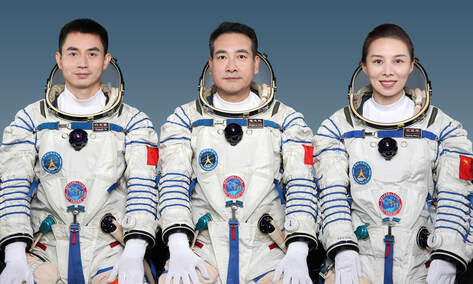 Photo:CMSA Photo:CMSA In the past ten years of research and development of space technology, China has enjoyed various opportunities to be a superpower in outer space. Steady economic growth rate and increase of its GPD enabling government funding are some of them. It has also developed its own national space technology with spacecraft launching capabilities, and its space activities are in accordance with the current international legal framework. On October 16, 2021, three Chinese Astronauts in the Shenzhou mission entered the Tiangong for a six month stay, its longest mission in history. China has launched 12 spacecraft, plus the Tiangong 1, and the Tiangong 2 Space Laboratory. The country has trained and sent 11 astronauts to outer space 14 times and returned them safely to Earth. The design life expectancy of the 5-module station is 10 years with possibility of extension. Learning from terrestrial healthcare: 3 ways to get medical autonomy for deep space travel13/5/2021
Jules LanceeBiomedical engineer, with a focus on emerging technologies and their role in the changing world of healthcare. He explores how they will impact the care delivered to patients, but is also equally interested in how they could benefit the future of long-term spaceflight. He believes both questions are opportunities for collaboration and inspiration! 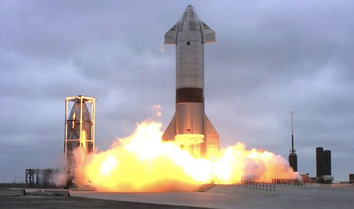 SpaceX Starship landing SpaceX Starship landing How would you deal with physical and mental health needs on a three-year round-trip to Mars? Those are questions I often think about and I would like to take you on a tour of solutions already out here on Earth, that might benefit those first astronauts to the Red Planet. Last week SpaceX performed another successful test of its Starship. The Starship is designed to eventually bring as many as a 100 people to Mars per flight. We’ve seen many recent plans for human spaceflight, both commercial and non-commercial and it’s about right to say that humankind will go on more and longer duration space missions. A lot of engineering research is going into the development of rockets and other technological advancement, but just as important as getting there, will be getting there alive and healthy! That’s not a trivial problem: Especially when we will go on deep space missions to Mars and beyond we will run into some basic limitations. There will be communication delays, we will have limited medical equipment on board due to limitations in mass, volume and electricity, and limited medical skills. A doctor can come along, but the doctor can also become sick, and of course, emergency evacuation to Earth will no longer be an option. Therefore, we will need a sense of medical autonomy for those astronauts on the go. We will send the most healthy human beings on such a mission, but a 3-year trip is a long time to stay healthy in the extreme environment of outer space. If not physical problems, then also psychological issues can become a risk to the success of the mission, which the crew themselves will need to deal with. In this quest for medical autonomy, I argue, we can learn from trends in healthcare and healthcare innovation on Earth, so let’s shortly take a trip back to Earth. In this short overview of the history of healthcare, a lot has happened since Hippocrates worked out the oath for medical professionals. None of the developments shown however, were as fundamental as the last one, the advent of digital health technologies. By becoming digital, solutions for healthcare have become smaller, faster, cheaper and in many cases, smarter. Solutions are leveraging Artificial Intelligence, Virtual and Augmented Reality, blockchain, voice recognition and 3D printing. These are just some of the technologies that are impacting healthcare.
As a result of this impact, we see various shifts in healthcare, going from a reactive system to more preventive care and from a one-size-fits-all-healthcare to precision medicine. Most importantly, however, you see a shift in power. The relationship between the doctor and his or her patient is changing from a more dependent relationship, into a partnership, in which the patient is empowered with technology, to take care of his/her own health or medical issues. In other words, terrestrial patients are becoming more autonomous when it comes down to their health and care. It is this change, that is also needed for astronauts on their way to Mars. A different relationship between astronauts and their doctors in mission control is needed and this can be achieved, by leveraging new health technologies. Here are 3 terrestrial examples: Vladimir PletserDirector of Space Training Operations, Blue Abyss; European Space Agency (Retd); Chinese Academy of Sciences (Retd); InnovaSpace Advisory Board Member Congratulations to Editor Vladimir Pletser and all the authors who contributed to this interesting open-access book entitled Preparations of Space Experiments, which was published this week. Spend a few minutes watching Vladimir as he summarises the contents of each chapter, written by world-leading researchers who have designed and prepared science experiments on microgravity platforms, including aircraft parabolic flights, in preparation for subsequent spaceflight. Prof. K GanapathyInnovaSpace Advisory Board member, Past President Telemedicine Society of India, Former Secretary/Past President Neurological Society of India & Indian Society for Stereotactic & Functional Neurosurgery, Emeritus Professor Tamilnadu Dr MGR Medical University, Former Adjunct Professor IIT Madras & Anna University Madras, Founder Director, Apollo Telemedicine Networking Foundation & Apollo Tele Health. 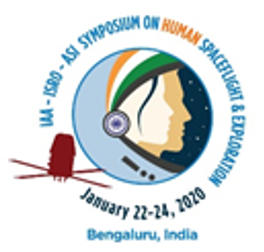 January 22-24th 2020 saw the taking place of an international Symposium on Human Spaceflight, in Bengaluru, India. The event, jointly organised by the Indian Space Research Organisation (ISRO), International Academy of Astronautics (IAA) and Astronautical Society of India (ASI), under the theme of ‘Human Space Flight and Exploration – Present Challenges and Future Trends’, saw the coming together of more than 500 national and international delegates, all experts in the field of human spaceflight related technologies, from space agencies, astronauts, representatives of International space industries and academic institutes, young professionals and students. The Symposium was inaugurated on the 22nd January 2020 by Prof. K VijayRaghavan, Principal Scientific Advisor to the Government of India, in the presence of Dr K Sivan, Chairman of ISRO, and the Honourable Prime Minister of India, Shri Narendra Modi conveyed a special message to the symposium participants. The PM highlighted that the benefits of India’s Space programme should be shared with the entire world, in line with India’s wisdom of "Vasudaiva Kutumbakam" - which in Sanskrit means the World is one family. Shri P Kunhikrishnan, Director, URSC and Chairman of the Local Organising Committee, welcomed the participants. Dr B N Suresh, Honorary Distinguished Professor, ISRO and Dr Jean Marc Astorg, Director Launch Vehicle Directorate, CNES, France, the International Programme Committee Co-Chairs addressed the gathering.  Symposium participants and delegates Image source: ISRO Symposium participants and delegates Image source: ISRO The ‘Heads of Space Agencies Panel’ was composed of the Space Agency chiefs from India and Romania, and the heads of the Human Spaceflight Programmes of CNES (France), NASA (USA), JAXA (Japan), ASI (Italy), and ROSCOSMOS (Russia). The agency heads made deliberations on the progress and future plans of the respective Space Agencies under the changing landscape and economics of human spaceflight and deep space exploration. Mr Jean-Yves Le Gall, President of CNES addressed the gathering on January 24, 2020 on the Indo–French partnership in human spaceflight. Another significant event in the Symposium was the ‘Astronaut Panel’ held on January 23, 2020 with the participation of five astronauts from France, Germany, Russia, USA and UAE, with the panel being moderated by Air Commodore (Retd) Mr Ravish Malhotra. The astronauts presented their thoughts on spaceflight and the technical, physiological and psychological challenges of humans during spaceflight. The Symposium received a good response from the Industry, and an exclusive industry panel was also organised providing an opportunity for Indian and foreign space industry leaders to discuss their perspectives on human spaceflight and exploration. A total of 19 invited and plenary lectures were delivered by eminent experts in the Human spaceflight area, from USA, Russia, France, Japan, Italy, Germany and the UAE. Around 100 technical papers were presented by the delegates from different countries under 5 major topics, namely, Challenges, Enabling Technologies, Ground Systems, Scientific and Societal Relevance, Policy Aspects and Economics of human spaceflight. In addition, an exclusive student session was held (January 23, 2020) to give a special focus on the younger generation. Sixty students from premium academic institutions across the country participated in the session and 10 selected papers were presented by students. An exhibition of technologies and products related to Human Spaceflight, including space food, was organised as part of the symposium. A full-size model of a Crew Module, scaled models of the Crew Escape System, and the space station concept were showcased. The three-day Symposium has enabled an exchange of information between the delegates on the latest trends in human spaceflight exploration. 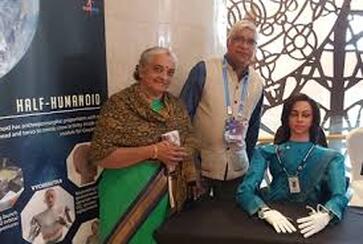 India's Vyommitra 'space robot' India's Vyommitra 'space robot' Also on show at the symposium was the Vyommitra 'space robot', a half-humanoid being made to accompany astronauts on the #Gaganyaan mission, and able to monitor biological parameters and perform life support operations. The robot will also be able to converse with the astronauts, recognise them and respond to their queries, as well as respond to commands from the control centre in Bengaluru and give feedback to the scientists who will be monitoring from Earth. Sources: 1 - https://www.isro.gov.in/update/24-jan-2020/iaa-isro-asi-symposium-human-space-flight-and-exploration-was-organised-bangalore 2 - https://www.news18.com/news/tech/isros-vyom-mitra-humanoid-robot-set-for-an-unmanned-trip-into-space-watch-video-2469801.html InnovaSpace Advisory Board Member Prof K. Ganapathy presented a paper at the symposium on “Neurological Changes in Outer Space”. It was the only paper presented by a medical doctor and served to raise the awareness of leading space scientists, engineers and technologists to the significance of giving equal importance to the health of the Vyomanauts on board the spacecraft.
Author: Adriana Bos-Mikich PhDDepartment of Morphological Sciences, ICBS, Federal University of Rio Grande do Sul, Brazil 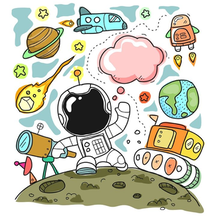 The last few decades have seen remarkable progress in our ability to safely launch manned craft into the black abyss of space, boosted in recent years by the growing involvement of commercial space enterprise, such as SpaceX and Blue Origin. With it has come a rising desire to work towards the establishment of longer-term human settlements in orbiting space stations and on the Moon and Mars. Recent experiments, although methodologically limited, have demonstrated that frozen human sperm samples are not affected by the microgravity conditions encountered in spaceflight, which is an important and positive finding. However, life in space is not confronted by microgravity alone, but is also faced with high radiation levels, which may well represent a relevant source of concern when dealing with human reproduction beyond Earth. Cryopreserved sperm and oocyte samples stored in outer space under these two hostile conditions must survive and maintain viability long enough to generate viable embryos, if they are eventually to result in healthy babies born aboard space stations. The putative effects of long-term storage of human gametes and embryos under Earth atmospheric conditions have already been investigated. Data from early clinical and experimental studies have shown that background radiation has no deleterious impact on babies created after long-term storage of frozen human embryos and oocytes. Therefore, the next steps should involve similar experiments taking place under the conditions of being in an outer space environment, where radiation levels are far higher than on Earth, before considering the generation of embryos using cryopreserved gametes stored on space stations. Nonetheless, the risks of reduced viability due to radiation levels and microgravity are not the only concerns related to the cryostorage and shipment of human gametes. There are other risks associated with the cryostorage of biological material, both on Earth and in Space, ranging from the transmission of diseases between samples stored in liquid nitrogen, to unintentional loss due accidental warming. The loss of oocytes and embryos due to major equipment failure has been reported in fertility clinics, with thousands of gametes and embryos being lost worldwide. As reported by assisted reproduction specialist Dr Mina Alikani in 2018, the maintenance of a very low temperature and avoidance of temperature fluctuations are key factors for the safe and long-term cryostorage of human cells and tissues. Additionally, the shipment and handling of cryopreserved biological samples represents another potential hazard for gametes and embryos. Results of research by Casey McDonald and colleagues in 2011, using donated human oocytes, warned of the effects of the ‘inherent perils of shipping’ on the lowering of survival rates, with exposure to elevated ambient temperature and air pressure, vibration or any other physical shock potentially contributing to poorer results. 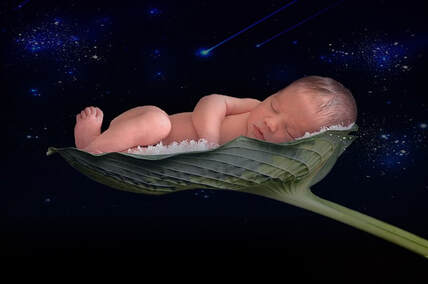 Therefore, for the successful transport of biological samples under cryostorage, it is essential that appropriate shipping vessels be used, such as those allowing continuous temperature monitoring, rather than relying on data collected at the final destination. Big question marks remain as to whether healthy babies can be born following the use of in vitro fertilization technologies performed in outer space. Furthermore, major safety and ethical concerns must be taken into consideration before such a giant leap for humanity is taken. See also article: Assisted reproduction frontiers in outer space Adam J CrellinGraduate Medical Student, Oxford University; Analog Astronaut, Austrian Space Forum 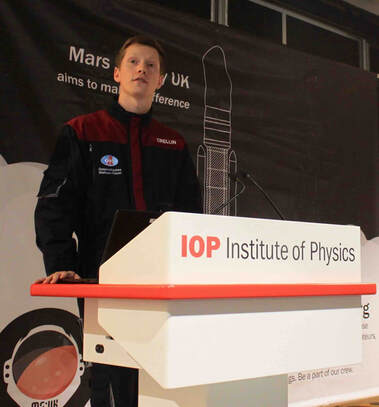 Analog astronaut Adam Crellin giving his graduation speech Analog astronaut Adam Crellin giving his graduation speech While attending the 2019 European Mars Conference in London this week at the Institute of Physics, we had the pleasure of witnessing the graduation ceremony of the next cohort of newly qualified Austrian Space Forum (OeWF) analog astronauts, who will take part in next years' AMADEE20 Mars analog mission in Israel. Analog astronauts are people who have been trained to test equipment and conduct activities under simulated space conditions, and they play an important role in preparing for future Moon and Mars missions. We liked so much the graduation speech given by analog astronaut Adam Crellin that we asked if we could publish it here on the InnovaSpace website to inspire all the young would-be astronauts out there - dream big! "I would like to open by saying not only how much of an honour it is to speak on behalf of my classmates and the Austrian Space Forum today, but also to stand in front of you all as a newly qualified analog astronaut. I am especially proud to be speaking at a European-wide conference in the UK, organised by the recently reformed Mars Society UK.
In classrooms across the UK, and even the world, children are being asked by their primary school teachers, the existential question of ‘what do you want to be when you grow up?’. Some of these children, fascinated by space, will say they want to be an astronaut. Children often continue this hope as they grow older, perhaps keeping it a bit quieter, guarding it a bit more closely. Later, they then discover that there are a huge range of diverse opportunities in space, and that astronauts are one small cog in a large machine. A machine that contains astronauts who plant flags; plant experts who grow astrocrops; astronomers who study the universe and its laws; lawyers who write legislation through careful engineering; engineers who build spacecraft that rock; and, well, for those who like rocks, there is geology as well as countless other professions." |
Welcometo the InnovaSpace Knowledge Station Categories
All
|
UK Office: 88 Tideslea Path, London, SE280LZ
Privacy Policy I Terms & Conditions
© 2024 InnovaSpace, All Rights Reserved
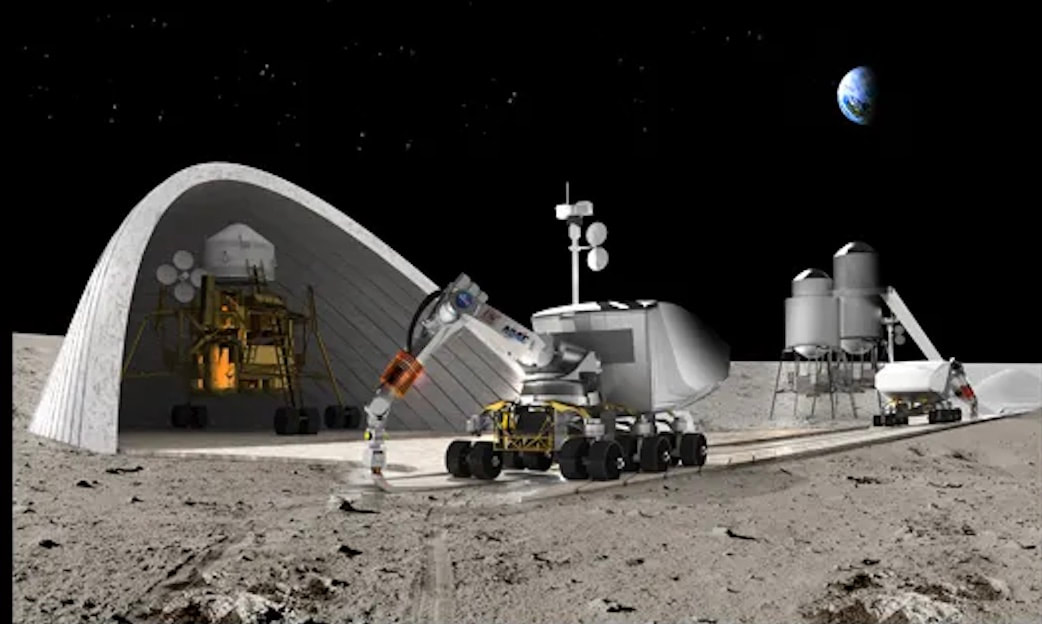
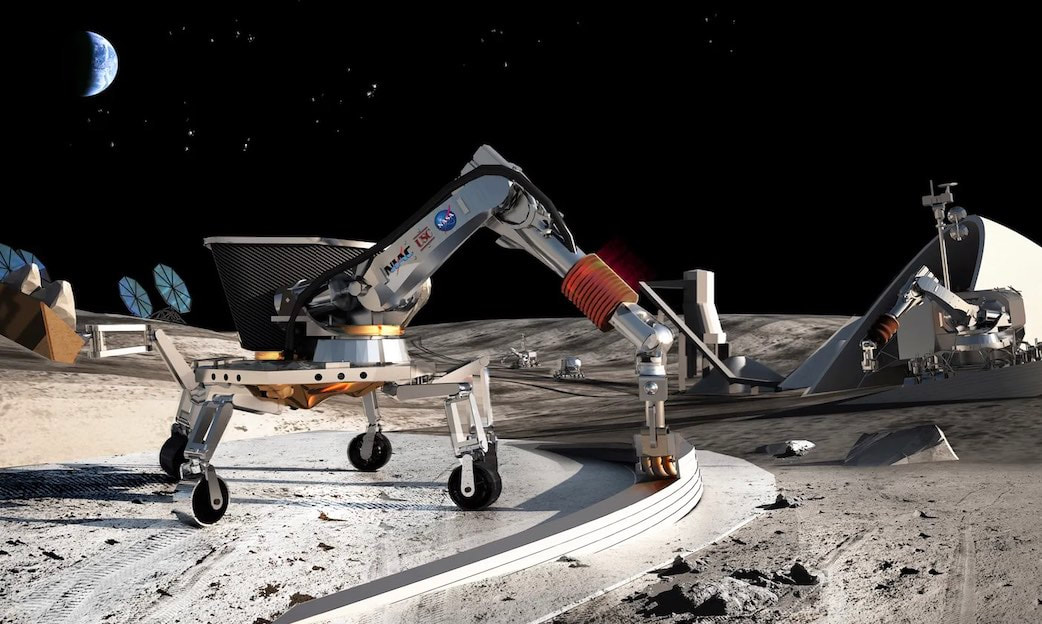
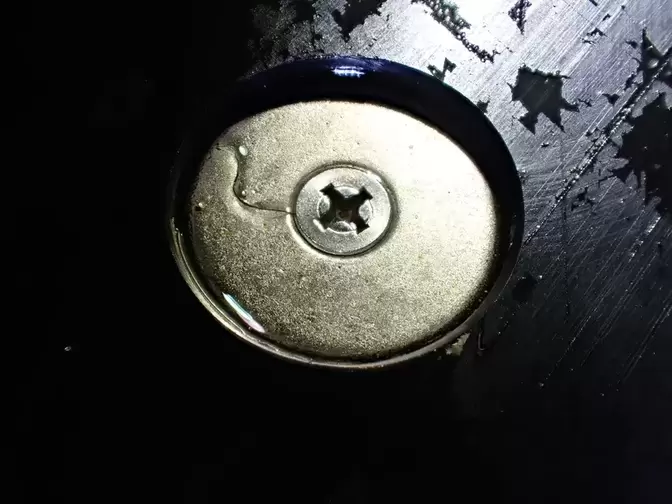
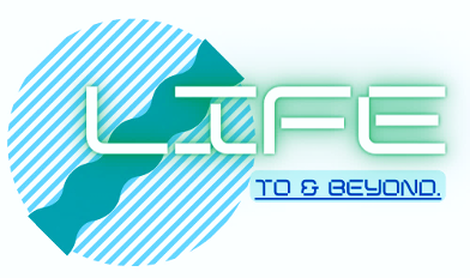
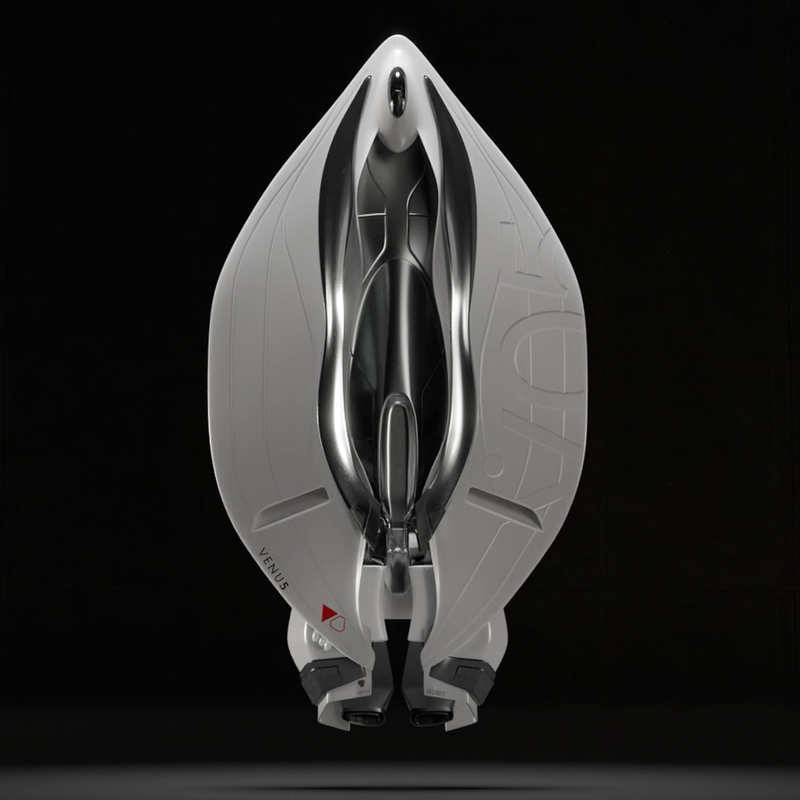
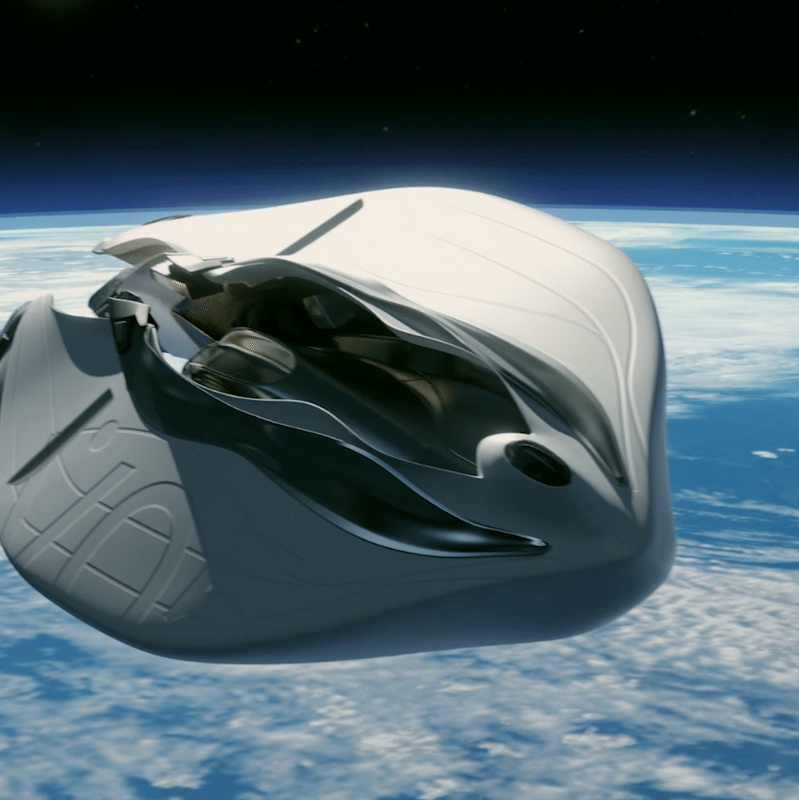


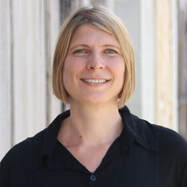

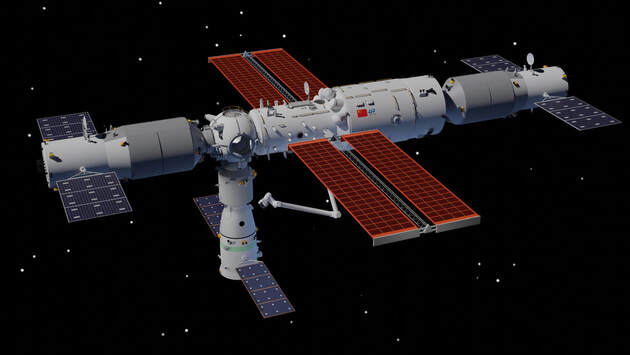
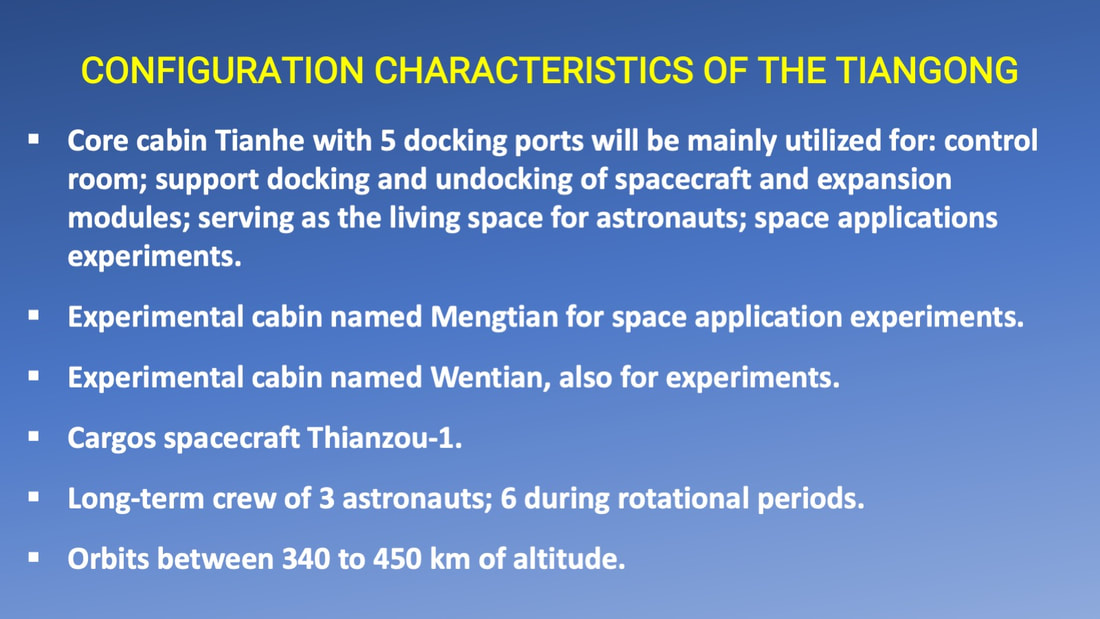
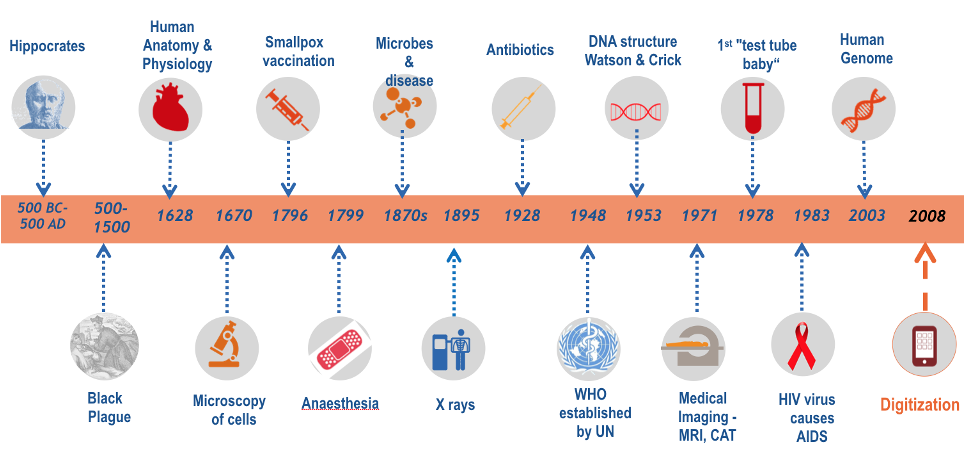
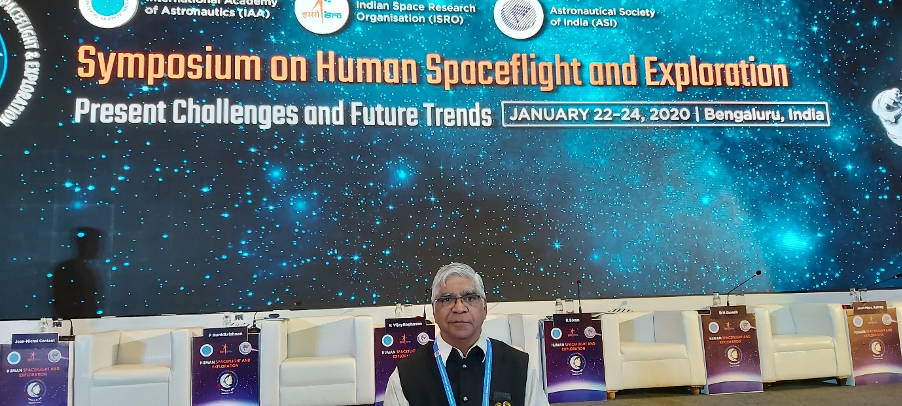
 RSS Feed
RSS Feed